What’s the state of flash fiction today? Seems there’s no short answer. But I asked a handful of author/editors who write and review flash fiction day in, day out (see some of their favorites published at The Millions earlier this month). Their responses are expansive, touching on the difference between adapted fragments and “a real flash piece;” transitioning from nonfiction and poetry; erotic gapes; Carver, Sarraute, Oulipo, and Joseph Cornell; fast-food literature; guerilla literacy; readers as co-creators, and the future of flash’s evolving aesthetics.
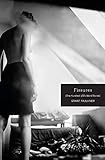
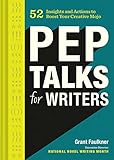
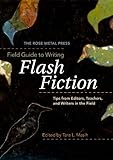 Nancy Stohlman is the author of three books of flash fiction, editor of three anthologies of flash fiction, and a prominent instructor of flash fiction techniques; Tara Lynn Masih is the founding editor of Best Small Fictions anthology series and the Field Guide to Writing Flash Fiction; Lynn Mundell is a co-founder of 100 Word Story whose flash fiction has been published in numerous journals and anthologies; and Grant Faulkner is the author of Pep Talks for Writers and the flash collection Fissures.
Nancy Stohlman is the author of three books of flash fiction, editor of three anthologies of flash fiction, and a prominent instructor of flash fiction techniques; Tara Lynn Masih is the founding editor of Best Small Fictions anthology series and the Field Guide to Writing Flash Fiction; Lynn Mundell is a co-founder of 100 Word Story whose flash fiction has been published in numerous journals and anthologies; and Grant Faulkner is the author of Pep Talks for Writers and the flash collection Fissures.
Jon Roemer: What was the first flash fiction you read? Were you writing it before you knew it as a practice, and then realized it’s a thing? Or did you have model practitioners before you first started?
 Tara Lynn Masih: Yes, I was taught to write in what some call “vignettes,” brief scenes that my high school writing teacher encouraged her students to explore… It wasn’t till someone gave me Shapard and Thomas‘s Sudden Fiction that I knew, years later, that what we had been doing in that classroom years earlier was becoming “a thing.”
Tara Lynn Masih: Yes, I was taught to write in what some call “vignettes,” brief scenes that my high school writing teacher encouraged her students to explore… It wasn’t till someone gave me Shapard and Thomas‘s Sudden Fiction that I knew, years later, that what we had been doing in that classroom years earlier was becoming “a thing.”
Nancy Stohlman: Flash fiction arrived for me in 2007 as I was writing my third novel, agonizing over it like a relationship you really really want to work out, dammit! It was during my MFA at Naropa University—I took a flash fiction class with Barbara Henning, and after so many years of writing more—talk more about this, give more description here, more backstory here, explain this more—it was such a relief to write less. I feel like flash fiction saved me from writing all those novels. Because I never really wanted to say all that other stuff anyway. Six months later I co-founded Fast Forward Press…I read hundreds of submissions and I started to lean into flash with my body, listening for my own voice to emerge.
Lynn Mundell: Apparently, I was reading flash fiction long before it was called that since I read Hemingway in high school and then Chekhov, Raymond Carver, and Kate Chopin, among others, in college. During this time I wrote poetry, and much later turned to creative nonfiction. It wasn’t until we opened up shop at 100 Word Story that I really started reading flash in earnest, then expanding to include writing my first flashes—a trio of “scary tales” for an early Halloween issue…That said, I really love a good, fat novel!
Grant Faulkner: I began writing short shorts before I truly knew flash fiction as a genre. I’m a ragpicker by nature, so I’ve always collected odd things that I find on the streets or in flea markets, and I view a lot of my flash pieces in such a way. Life isn’t a round, complete circle—it’s shaped by fragments, shards, and pinpricks. It’s a collage of snapshots, a collection of the unspoken, an attic full of situations you can’t quite get rid of. The brevity of flash is perfect for capturing the small but telling moments when life pivots almost unnoticeably, yet profoundly.
JR: When do you turn to it now? As a writing exercise, or as something that just happens, or with the forethought of achieving something specifically flash? Has your approached evolved or changed?
TLM: Flash is a creative respite for me. It’s been there through some very stressful times, both personally and professionally. I can sit down at my desk without pressure. I can simply enjoy creating something I know won’t take months or years, yet get the same feeling of fulfillment after I’ve completed a flash piece that satisfies me. Sometimes within the hour.
NS: When I first started writing flash fiction I was just pretending to write it—I was basically a flash fraud. My “flash” stories were just cannibalized from my novels and other longer projects and given new titles. And this sort of worked, for a minute, but it felt like cheating (and it was). I think many writers spend some transitional time as flash frauds while learning the form. Eventually you run out of excerpts or longer stories to butcher and you’re forced to do what you should be doing from the beginning—seeing through the flash fiction lens. The switch flips. I knew when I finally wrote a real flash piece and not something passed off as one. It felt different. These days my work keeps getting shorter and shorter. I’m afraid one day an entire story will be distilled down to the letter P. And it will be perfect.
LM: I am intentional when I write flash, although my “failed” flashes are probably just exercises or warmups for the better writing. For me flash writing is very challenging but also understandable, because there is a crossover with poetry writing as far as length, use of metaphor, dramatic leaps, and inventive forms in order to deliver a finished piece. I have also returned to creative nonfiction by writing some in flash form. I write anything between six-word stories and those around 1,000 words. It’s just lately that I find myself writing longer pieces, although I will probably keep writing flash because I love it and I still have so much to learn within the form.
 GF: When I get an idea for a story, I always know immediately whether it’s a short short, a short story, or a novel. It’s just an intuitive sense of what form the story needs. The change in my approach over the years comes from my rag-picker aesthetic. I collect words and stray phrases and snippets in notebooks, and often one of those starts to flow into a story. Writing flash has influenced my longer writing. My novels now often move with a flash aesthetic—I like imagining stories in a fragmented, elliptical way—so I think there’s a little flash in all of my writing. I think often of Roland Barthes’s question in Pleasure of the Text: “Is not the most erotic portion of the body where the garment gapes?” It’s an apt metaphor for flash fiction because these tiny stories flow from tantalizing glimpses that lure the reader forward. Writing flash has taught me how to move a story along by implications, through escalating hints, and that what’s left out of a story is often more important than what’s included.
GF: When I get an idea for a story, I always know immediately whether it’s a short short, a short story, or a novel. It’s just an intuitive sense of what form the story needs. The change in my approach over the years comes from my rag-picker aesthetic. I collect words and stray phrases and snippets in notebooks, and often one of those starts to flow into a story. Writing flash has influenced my longer writing. My novels now often move with a flash aesthetic—I like imagining stories in a fragmented, elliptical way—so I think there’s a little flash in all of my writing. I think often of Roland Barthes’s question in Pleasure of the Text: “Is not the most erotic portion of the body where the garment gapes?” It’s an apt metaphor for flash fiction because these tiny stories flow from tantalizing glimpses that lure the reader forward. Writing flash has taught me how to move a story along by implications, through escalating hints, and that what’s left out of a story is often more important than what’s included.
JR: What do you think about working with limits, like 100 words? French Oulipo writers felt constraints could be freeing, that overtly imposing them is a way to acknowledge the constraints on writing everywhere. Do you find limits freeing?
TLM: I love working with word count limits because it is more of a challenge. It’s double enforcement of the rule of concision. Not only do you have to be concise, you have to find ways to tell your story in an even smaller box. I personally don’t feel it’s freeing, it’s just fun and rewarding if it works.
NS: We’re working within limits all the time—publishers define a novel as 60,000 words, for instance, so writers write to that finish line. I love the Oulipo movement, it’s a big inspiration to me. Interesting things bulge against a boundary: you can only paint with the color green; you must finish a film in 48 hours; you have to write a story without using the letter E. Beethoven wrote his most important symphony when he was deaf. I think the magic of flash fiction happens because of the constraint. But flash fiction is influenced by other artistic movements, too—the Impressionists suggested entire scenes with just dots and splashes, for instance. Of course people didn’t consider it “art” for a long time, and that’s where politics comes in. Remember that the novel was once considered a vulgar, lesser art form mostly written by (yikes!) women! I’ll quote Yoda here: We must unlearn what we have learned.
LM: It’s sort of like pruning a bonsai, trying to make this perfect, unique item that can be viewed and absorbed in a sitting or returned to and admired with a longer look. That said, the stakes are high because you can really screw it up if you don’t accomplish a complete story within that allotted word count, and there sure isn’t anywhere to hide from the failure.
GF: The constraints of different forms spark different types of creativity, whether it’s a sonnet, a villanelle, or a 100-word story. These “boxes” make the creative act more difficult, yet the requirements of the form force the writer to look beyond obvious associations. Imaginative leaps don’t necessarily happen by thinking “outside the box” as the popular saying goes, but within the box. I learned this when I started writing 100-word stories after years of writing novels. A novel is like a Southwestern city. You have so much land to build on that you can just keep building further outwards. Writing a story in exactly 100 words is more like building a tiny town hemmed in by mountains and the sea. You have to be very careful with each element you add. You have to eliminate excess. I like to think of my miniatures as one of the artist Joseph Cornell’s box collages—a poetry of assemblages confined in a frame that is its own expansive world. The condensation of a 100-word story can open up the irreducible mystery of a single intense moment.
JR: Most people who haven’t read flash fiction presume it’s like poetry—like an old-fashioned tone poem, impressionistic and without characters and plot. That style of flash certainly exists and delivers in lots of beautiful ways. But flash fiction can also achieve solid narratives, with a beginning, a middle, and an end. When you read flash fiction, what do you like best?
TLM: I like the best of every form. In Best Small Fictions, we’ve drawn attention to the haibun story. I love its mix of prose and haibun, another challenge. Form doesn’t sway me one way or another, it’s voice, subject matter, setting, details, etc. The same for any short story.
NS: People who think flash fiction is like prose poetry have not read enough flash fiction. Just because a piece of writing is small doesn’t mean it’s flash fiction. For me the difference is a sense of urgency: Flash fiction is always telling a story. A woman at a cafe watching the way the fall leaves shimmer in the sun could be a prose poem or a vignette or even a character study. But a woman at a café watching the way the fall leaves shimmer in the sun—as a man in overalls is sawing through the trunk—has urgency. Obviously there’s crossover. Can’t poetry tell a story? Of course. Can’t flash fiction be poetic? Absolutely. But the answer lies in the driving force of a piece: prose poetry and vignettes are driven by imagery and emotion whereas flash fiction has an almost desperate need to tell a story before it’s too late.
LM: I like a wide range of styles, from the impressionistic to the “traditional” stories that are very plot-driven, but for me a successful flash has to have a thrust or denouement, even within flash that is more of a hybrid between poetry and fiction. A favorite impressionistic piece is called “Candlelight,” by Christina Sanders, in which the daughters witness their mother glow and then dim over the years as she is thwarted at work, men, and just life. It has characters and moves through time, but this very short flash is told through this one really gorgeous image carried throughout.
GF: Although a good short short has a beginning, a middle, and an end, flash stories are built through gaps as much as the connective tissue of words. They end, as Jayne Anne Phillips said, in a breath that takes the reader in and beyond the story. The most haunting stories are those that don’t provide answers, but open up questions. I like to think of the writer Ku Ling’s words: “A good short-short is short but not small, light but not slight.” In many ways, short shorts are the prose version of haiku. Like a haiku, a 100-word story is an imagist’s medium. Every word, every detail matters, but it moves through caesuras and crevices, and like poetry, tone, diction, and timbre can guide a story as much as a rising narrative trajectory of actions.
JR: When people talk about flash, they often mention the modern short attention span. But reading well-crafted flash is a long, long way from clicking on, say, a simple blog post. What do you think about the attention-span angle? Can you make more demands on the reader in flash, compared to longer forms? Can flash fiction be too dense?
TLM: They’ve been discussing the shrinking of the American attention span since the Industrial Revolution in the 1800s. Periodicals back then were publishing many “short short stories,” which was the term most of the journals used. So I don’t quite buy that theory. Especially since many readers still prefer reading novels. But I do think it lends itself well to online journals and social media, which has helped spread it around the world.
NS: I think there should be a special level of Dante’s Inferno reserved for the people who make the short-attention span comment. Is the bonsai tree proof that its creator didn’t have the attention span for a full-sized tree? Basically the logic in the short attention span argument is that flash fiction is the fast food of literature, served up for increasingly dumb and/or distracted readers. I believe just the opposite: not only is flash fiction cultivating a new kind of writer but also a new kind of reader. The reader become a co-creator in the process rather than just a passive consumer. The writer throws clues, the reader lines them up. What the author omits, the reader intuits. I think it requires more intelligence from the reader. And anyone who has tried writing flash thinking it will be easy has usually had a very shocking revelation. Like painting the Mona Lisa on a grain of rice.
 LM: We have so much thrown at us these days, from work emails that grind through the evening and weekends to a news cycle that brings tragedy right to us even as it is unfolding. That has to impact our ability to focus on the present and to commit to things that take longer to do. But I am overjoyed to report that I still see people reading and even writing during my weekday train commute, and my youngest son, who is 15, read War and Peace over the summer, which he thoroughly enjoyed. Flash is another form to read, not a replacement for people who are distracted. That said, I suppose flash is very well-suited for social media, since you can read a flash on your phone from the many, many online literary journals out there, or even tweet the shortest flashes. I like to think that flash is doing a form of guerilla literacy to all of the people glued to their devices!
LM: We have so much thrown at us these days, from work emails that grind through the evening and weekends to a news cycle that brings tragedy right to us even as it is unfolding. That has to impact our ability to focus on the present and to commit to things that take longer to do. But I am overjoyed to report that I still see people reading and even writing during my weekday train commute, and my youngest son, who is 15, read War and Peace over the summer, which he thoroughly enjoyed. Flash is another form to read, not a replacement for people who are distracted. That said, I suppose flash is very well-suited for social media, since you can read a flash on your phone from the many, many online literary journals out there, or even tweet the shortest flashes. I like to think that flash is doing a form of guerilla literacy to all of the people glued to their devices!
GF: In this world of more—more emails, more social media, etc.—people’s reading styles have changed. People scan and read in nuggets, and online platforms are largely designed for that type of storytelling. When we started 100 Word Story, we thought 100 words was the perfect length of story to read online because 100 words is essentially a Facebook post. That said, most flash stories shouldn’t be read in such a breezy fashion. In fact, because they speak to what’s left out, because they often border on prose poetry, the reader needs to pause, reflect, and fill in the gaps—to be a co-creator, essentially.
JR: Should flash fiction be considered and judged in a category separate from the conventional short story and its traditions? Readers and writers bring different expectations to short stories than to novels, and its traditions have shaped those expectations. Is it helpful to construct a separate category for flash? Does that fit with the spirit of flash fiction? Or should I quit poking at it?
TLM: When I dream of the future, I see flash being taught side by side with the longer form. I know some academics still think of it either as a gimmick or as just a really short story. I do believe that there are differences in practice and execution, and just as there are different forms in poetry, there are different forms in prose. Separate it if you wish, but don’t disregard it.
 NS: Absolutely, especially when we start looking towards flash books. And absolutely there are politics involved—for starters who has the power of naming and defining? Don’t forget the term “flash fiction” has only recently, in the last 25 years, given legitimacy to the form—until then all these stories were “marooned in a wasteland” as Susan Sontag would say, forced to compete with much different stories. In 2011, an anthology of flash fiction I co-edited, Fast Forward: The Mix Tape, was a finalist for a Colorado Book Award—but they didn’t have a category for flash fiction, so it had to go in “literary fiction” and compete against two novels! Apples versus oranges. Flash fiction writers are using a different set of skills and writing a different kind of story. A word of caution: Flash fiction is still emerging, still soft in the hands, still pliable, still wonderfully gooey and fresh. And while this stage of emergence and convergence is desirable, it also leaves the art form vulnerable to others who will want to define it, start to put rules on it. It’s exciting to envision flash as mainstream, but there is also the very real possibility that we will lose some of the elasticity we currently enjoy.
NS: Absolutely, especially when we start looking towards flash books. And absolutely there are politics involved—for starters who has the power of naming and defining? Don’t forget the term “flash fiction” has only recently, in the last 25 years, given legitimacy to the form—until then all these stories were “marooned in a wasteland” as Susan Sontag would say, forced to compete with much different stories. In 2011, an anthology of flash fiction I co-edited, Fast Forward: The Mix Tape, was a finalist for a Colorado Book Award—but they didn’t have a category for flash fiction, so it had to go in “literary fiction” and compete against two novels! Apples versus oranges. Flash fiction writers are using a different set of skills and writing a different kind of story. A word of caution: Flash fiction is still emerging, still soft in the hands, still pliable, still wonderfully gooey and fresh. And while this stage of emergence and convergence is desirable, it also leaves the art form vulnerable to others who will want to define it, start to put rules on it. It’s exciting to envision flash as mainstream, but there is also the very real possibility that we will lose some of the elasticity we currently enjoy.
LM: Flash may be a sister or cousin to short story and to poetry, but it is its own form with its own challenges and expectations, and now standards. As such, we see contests and “best of” nominations and anthologies dedicated to the form, which seems appropriate to me. I tend to read those because it is a sort of curating of the best writers and stories out there, which I might not be able to find on my own. What might be more debatable is what to call flash. Some like to call it short-short stories because that signals that it is not something trendy, which is sort of what flash sort of sounds like, but rather part of the family of storytelling as old as man.
GF: I find it interesting that some keep defining the word count of flash upward—from 1,000 words to 1,500 words to 2,000 words. At the same time, the conventional short story seems to be shrinking in length. Journals that used to accept stories that were 8,000 or 10,000 words long now ask for stories that are less than 5,000 words. Maybe the forms will meet in the middle, but a novelistic short story by Alice Munro is obviously quite different than a one-sentence story by Lydia Davis, so I think of flash as a distinct aesthetic, one that lives on the border of prose and poetry, one that requires a different sensibility, so I turn to it as a writer and a reader with different expectations and needs.
JR: Who are your favorite flash fiction writers? Who has been influential for you?
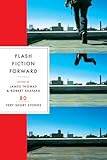
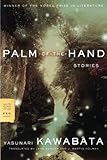 TLM: There are too many to list. But I’d have to put Yasunari Kawabata at the very top of mine. His Palm-of-the-Hand Stories should be required reading in every English class.
TLM: There are too many to list. But I’d have to put Yasunari Kawabata at the very top of mine. His Palm-of-the-Hand Stories should be required reading in every English class.
NS: This is a hard question to answer, because what is happening in the flash world right now is a full-on literary movement: every flash fiction writer I know is kicking some serious butt. Literature is changing. It’s an exciting time to throw rocks into the status quo and watch the ripples. The anthology Flash Fiction Forward by James Thomas and Robert Shapard was influential in my flash education but the book that finally did it for me was Lydia Davis’s The Thirteenth Woman and Other Stories. I was in Puerto Rico by myself and I read that book and I was like—yeah. I get it.)
LM: This may be the hardest question of all, since there are so many excellent flash writers out there! I am going to skirt around any hard feelings by not naming a friend or 100 Word Story writer. I am a Lydia Davis groupie, and an Etgar Keret admirer. I love Jenson Beach, who wrote one of my favorite flashes, “Family.” I am a big fan of a California writer named Kara Vernor, whose work takes risks and is memorable and sophisticated. I just discovered Helen McClory after reading her incredible flash called “Pretty Dead Girl Takes a Break.” I couldn’t find the story again online so I bought her book in order to reread that one story! That’s the best kind of flash, that you just really crave and want to read over and over again.
GF: Nathalie Sarraute’s Tropisms is landmark collection of short-shorts for me. “Tropism” is a biological term that Sarraute described as the “interior movements that precede and prepare our words and actions, at the limits of our consciousness.” Sarraute sees these subconscious pulses as fleeting and often indecipherable, so we are unable to comprehend them when they happen. I love short shorts because they’re perfectly equipped to capture the nuanced turnings, the tropisms, of life.
Image Credit: pixabay.









